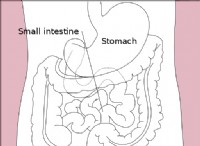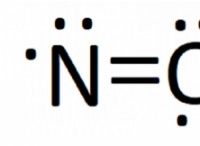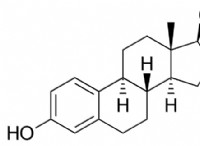IIT-JEE 시험을 정리하려면 학생들은 전담 노력을하고 적절한 계획을 세워야합니다. IIT 메인 시험 강의 계획서와 함께 12 번째 강의 계획서는 학생의 미래를 형성하는 데 중요한 역할을합니다. 따라서 모든 개념에 대한 철저한 이해는 필수입니다.
이 안내서는 금속과 비금속의 중요한 물리적 및 화학적 특성을 설명합니다. 따라서 어려움에 직면하거나 준비 과정을 시작하려면 가이드가 모든 질문에 답할 것입니다.
주기적인 테이블
주기율표는 각 화학적 특성에 기초한 요소 배열로 구성된 테이블 그룹입니다. 주기율표에서 모든 금속은 왼쪽에 등장하는 반면, 주기성 테이블의 오른쪽에는 모든 비 메탈이 있습니다. 주기 테이블의 행은 기간이라고하며 열은 그룹이라고합니다. 총 92 개의 요소가 있으며, 그 중 22 개는 비금속이고 나머지 70은 금속입니다.
더 잘 이해하기 위해, 아래에서 우리는주기 테이블에 처음 30 개의 요소를 원자 번호 및 전자 구성과 함께 나열했습니다.
| | POLPT " |
|
|
|
|
| 1s2
|
|
pi). | |
| | |
|
p>
p>
po p>
| |
|
| |
. | |
|
| |
| p) | |
|
| |
|
| 3S1
|
| |
. |
|
. | [ne] 3S2 3P1 |
|
| [ne] 3S2
3p 3p 3p 3p 3 3p 3p 3 3S2. |
|
p). | [ne] 3S2 3p3 |
| | [ne] 3S2 3p4 |
| 클로린 (cl) | |
| | [ne] 3s2 3p6 |
|
propassium. |
. |
|
| 4S2
. |
|
| [ar] 3d1 4S2 |
|
. | [ar] 3d2 4S2 4S2 4S2 |
|
| |
| | ar] 3d5 4S1 |
|
. | 3d5 4S2
|
| 26
|
| |
|
. | 3d7 4S2
[AR] 3D7 4S2 |
|
. | |
| bottom :0pt; |
| |
|
| |
금속
주기 테이블의 처음 30 개 요소에서 금속이 비금속과 비교하여 대부분이라는 것을 알 수 있습니다.
를 포함하여 여러 종류의 금속이 있습니다 -
알칼리 금속
-
알칼리 지구 금속
-
전이 금속
-
lanthanides
-
액티니티
금속의 물리적 특성
다음은 금속의 물리적 특성입니다 :
-
금속은 얇은 시트로 이길 수 있습니다. 즉, 자연에서 매우 가단성이 있습니다. 전형적인 예는 금,은 및 알루미늄이며, 장신구를 생산하기 위해 얇은 시트로 엄격하게 구타.
-
모든 금속은 액체 상태에 존재하는 수은을 제외한 견고한 형태로 존재합니다.
-
금속은 자연적으로 자연적으로 반짝입니다. 따라서 이들은 귀중한 장식품, 보석류 및 주방 용품을 만드는 데 사용됩니다.
-
금속은 전기와 열의 훌륭한 도체입니다. 따라서 열과 전기는 외부 또는 내부 손상을 일으키지 않고 금속을 쉽게 통과 할 수 있습니다.
-
금속은 본질적으로 연성이므로 가능한 한 얇은 전선으로 쉽게 뻗을 수 있습니다. 일반적인 예는 알루미늄 와이어와 구리 와이어입니다.
-
금속은 칼륨과 나트륨을 제외하고는 칼륨과 나트륨을 제외하고는 매우 무겁고 단단합니다.
-
객체에 부딪 칠 때마다 금속이 음란 한 소리를냅니다.
금속의 화학적 특성
다음은 금속의 화학적 특성입니다 :
금속의 물리적 특성과 비금속의 비교
| MALTALS
| 비-메탈
|
| | 비금속이 존재하지 않습니다.
|
| dens "> density density
. | 고도로 높은 붕어
| low.
. |
| 부울 "> 부울"> 부여. | | Low Booiling 및 Melting Point (graphite 및 diamond). |
| malleeality 및 ductality. | ductile 및 mallable
| 연애가 아닐 수 있습니다. |
| | 전기 및 열
| 불량 전도체 |
| ltrust "> ltr"style ="ltr"style. | Shining Luster
| no luster; 예외는 요오드
입니다 |
| sonory sound
| inounous
| non-sonorous
|
| Hardness "> | 일반적으로 hard> | 일반적으로 소프트
|
비 메탈
금속의 특성을 가지고 있지 않은 금속은 비금속이라고합니다. 70 인 금속과 비교하여 주기율표의 비금속 수는 예외적으로 낮습니다. 즉, 일부 비 메탈은 다음과 같습니다.
-
수소
Carbon
Phosphorus
Selenium
Nitrogen
Oxygen
All halogens
Sulfur
Noble gasses
Physical Properties of Non-metals
The following are the physical properties of non-metals:
When non-metal is beaten into thin sheets, they tend to break into pieces. Some common examples are phosphorus and sulfur.
When kept at room temperature, the non-metals can be in all states, including solid, gaseous, and liquid.
Non-metals are non-sonorous, so they do not produce any sound when beaten or hit by other objects.
Unlike metals, non-metals are not ductile, which means they can be transformed into thin wires.
Lastly, non-metals can be transparent.
Chemical Properties of Non-metals
The following are the chemical properties of non-metals:
Unlike metals, non-metals have a high number of electrons in the outer shell, around 4-8 electrons.
Every time a non-metal comes in direct contact with oxygen, it produces acidic oxides.
These are great oxidising agents and do not react when mixed with water.
Non-metals are electronegative elements.
Non-metals gain valence electrons.
Comparison Between Chemical Properties of Metals and Non-metals
Reaction Type | Metals | Non-metals |
Reaction with H2O | When reacting with water, metals form metal hydroxides and produce H2 gas. | When non-metals react with water, there is no reaction. |
Reaction with O2 | Metals, when reacting with O2, produce basic oxides. | In order to form oxides, the non-metals react with O2 or oxygen. |
Reaction with acids | When metals react with acid, it releases hydrogen and forms salt. | When non-metals react with acids, no reaction takes place.
|
결론
Physical and chemical properties of metals and non-metals are among the basic and most important concepts while preparing to appear in competitive examination. Over the past 10 years, a decent amount of questions have been asked from this chapter, which means it holds a lot of significance in every student’s life aiming to score higher grades.







